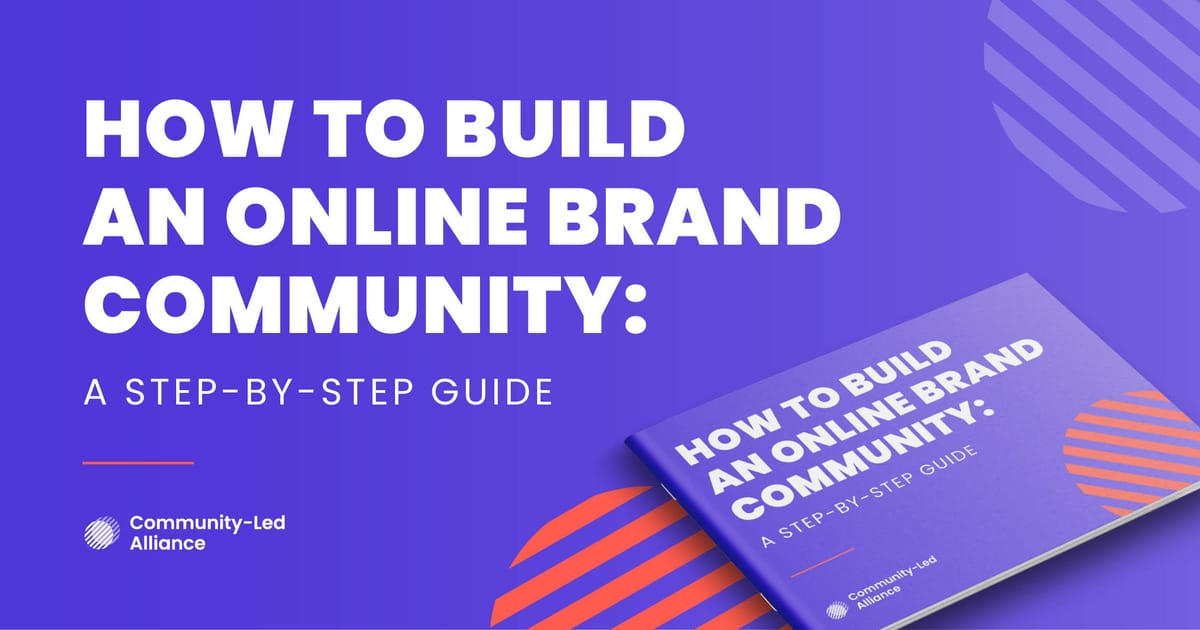Online communities play a crucial role in building meaningful connections between a brand and their audience. But managing these vibrant ecosystems effectively requires more than enthusiasm, it needs a deep understanding of how the community is growing and evolving.
This is where metrics come into play. Metrics give community managers the data-driven insights they need to understand their audience’s behavior, measure the impact of engagement strategies, and identify areas of improvement.
By tracking the right metrics, community managers can make informed decisions that contribute to sustainable growth and increased member satisfaction.
In this article, we’ll highlight key growth metrics that every community manager should be monitoring so they can help nurture and grow a thriving community.
Why tracking growth metrics is important
Tracking growth metrics is essential for community managers as it allows them to measure the success and impact of their communities. Metrics provide data that community managers can then use to evaluate the community’s progress towards its goals, such as user engagement or new members sign-ups.
Metrics also offer valuable insights into member behavior by revealing preferences, needs, and patterns. Analyzing member activity, engagement rates, and interaction trends allows community managers to develop targeted content and engagement strategies that cater to their audience.
By identifying which activities drive the most engagement, community managers can allocate resources more effectively. Engagement metrics allow them to refine engagement strategies, events, and communication channels, ultimately improving the community experience.
Growth metrics also shape strategic planning. They guide the strategic direction of the community, helping to establish realistic and data-driven goals. Insights from these metrics provide the foundation for setting key performance indicators.

8 essential growth metrics for community managers
1. Membership growth rate
Membership growth rate measures the increase or decrease in community membership over a specific period. It’s a crucial metric for understanding the overall trend in community growth and gauging the effectiveness of recruitment and retention efforts.
If you’re seeing a positive growth rate, that indicates the community is expanding, reflecting a successful recruitment strategy or member engagement. However, a negative growth rate suggests a decline in membership, possibly due to ineffective onboarding or engagement strategies, or a high churn rate.
To ensure you’re setting a realistic growth target, review past growth trends to identify a realistic baseline for future growth. Compare your community to similar ones to set competitive targets, and ensure that the growth target aligns with content and engagement strategies to effectively retain new members.
To boost your growth rate, ensure you create a welcoming onboarding process to engage new members from the get go. Encourage the existing members to invite new people with referral incentives, and offer members-only content and events to attract prospects and retain existing members.
Tracking the membership growth rate enables community managers to understand how effectively their community is growing and evolving. By setting realistic targets and adapting strategies based on data insights, managers can ensure sustainable growth and member satisfaction.
2. Active participation rate
The active participation rate measures the percentage of members actively participating in community discussions, events, or other activities within a specific timeframe. This metric provides insights into how engaged and involved the community members are.
Tips for encouraging participation:
- Foster a welcoming environment by creating a positive and inclusive atmosphere where members feel comfortable sharing their thoughts and opinions. Provide guidelines to set expectations around respectful communication and behavior.
- Recognize and reward participation by highlighting active members through shoutouts or member spotlights to encourage others. Implement a rewards system that offers badges, points, or tangible incentives for consistent participation.
- Organize interactive events like regular webinars, AMAs (Ask Me Anything), and live Q&A sessions to drive engagement. Conduct fun challenges, quizzes, or competitions that align with members' interests.
- Personalize content and engagement strategies to members' interests based on surveys or past participation. Send personalized invitations to members for relevant events or discussions.
- Encourage user-generated content (UGC) by inviting members to share their stories, advice, or expertise with the community. Feature UGC prominently to inspire others to contribute.
- Simplify contribution processes to make it easy for members to contribute by providing quick links, clear instructions, or templates. Use polls and questions as simple, low-effort ways for members to participate.
- Collect feedback regularly to understand barriers to participation and act on member suggestions to improve engagement strategies.
By tracking the active participation rate and implementing strategies to encourage involvement, community managers can cultivate a lively, interactive community that adds value to its members.
3. Engagement rate
The engagement rate measures how actively members interact with posts in the community. It includes things like likes, comments, and shares. This metric provides insight into how well your content is resonating with members.
Improving engagement:
- Create relevant and diverse content
Tailor your content strategy to address the interests and needs of different member segments. Mix educational, entertaining, and inspirational posts to keep the content fresh. For instance, share tutorials, industry news, user stories, and motivational quotes to cater to diverse tastes.
- Questions and polls
Questions and polls encourage members to share their thoughts with minimal effort. Pose open-ended questions related to current trends, challenges, or opinions. Polls can provide quick insights while also sparking discussions.
- Leverage UGC
Encourage members to share their experiences, success stories, or creative projects. Recognize top contributors by featuring their content prominently, which motivates others to participate.
- Organize interactive events
Webinars, live Q&As, and AMAs offer members opportunities to interact directly with experts or community leaders. Post-event discussions and follow-up posts can extend engagement beyond the event itself.

- Recognize and reward engagement
Celebrate members who consistently contribute through "Member of the Month" recognitions, digital badges, or exclusive perks. Public acknowledgment not only motivates active members but also encourages others to participate.
- Personalize member experience
Utilize data insights to recommend content, discussions, or events relevant to each member. Personalization increases the likelihood of interaction by aligning engagement opportunities with individual interests.
- Analyze and optimize content performance
Regularly review content performance to identify what resonates most with members. Adjust your strategy to focus on high-performing topics, formats, and posting times.
By strategically enhancing content quality, fostering interactive events, and personalizing engagement, community managers can significantly boost the engagement rate, creating a more lively and connected community.
4. Retention rate
The retention rate measures the percentage of members who continue to participate in the community over a specified period. It’s crucial for understanding long-term engagement, as a high retention rate indicates that members find value in the community and are likely to remain. However, a low retention rate may signal issues with membership satisfaction or engagement strategies.
Ways to improve retention:
- Offer exclusive content
Host members-only webinars and Q&A sessions featuring industry experts, where only members have access to ask questions and learn directly. Provide premium guides, how-to tutorials, and deep-dive articles exclusively available to members. Share internal reports, interviews with company leaders, or sneak peeks of upcoming features and products to create a sense of insider access.
- Provide networking opportunities
Create subgroups or private channels for members to discuss niche topics, collaborate on projects, or share best practices. Encourage members to connect through local meetups or virtual events like coffee chats and mastermind groups. Pair new members with experienced ones for mentorship, fostering connections and providing personalized guidance.
- Recognize and celebrate loyalty
Implement tiered loyalty programs that offer rewards, such as discounts, badges, or access to exclusive content, based on membership longevity. Send personalized messages or gifts to members on their anniversary, thanking them for their continued participation.
- Personalize the member experience
Use data insights to recommend relevant content, events, or discussions to each member based on their interests and past activity. Send targeted newsletters or updates highlighting content and events likely to interest specific member segments.
- Collect and act on feedback
Regularly survey members to understand their preferences, pain points, and expectations. Provide channels where members can directly suggest improvements or express concerns. Implement changes based on feedback, and communicate these improvements to members to show that their voices are heard.
By offering exclusive content, fostering valuable networking opportunities, and personalizing the member experience, community managers can significantly improve the retention rate, ensuring long-term engagement and loyalty among their members.

5. Churn Rate
Churn rate measures the percentage of members who leave the community within a specific period. This metric provides valuable insights into the community’s ability to retain members and is the inverse of the retention rate.
Identifying causes of churn and implementing preventive measures:
- Collect exit feedback
Send surveys to departing members to understand their reasons for leaving. Ask about their expectations, satisfaction levels, and potential improvements. Conduct interviews with a small sample of members to gain deeper insights into their experience and dissatisfaction.
- Analyze behavioral patterns
Identify patterns in activity decline before members leave. Look for indicators like reduced logins, decreased engagement, or lower event attendance. Review engagement rates and participation levels to spot trends among members at risk of churning.
- Address churn causes
Improve the onboarding process to ensure new members feel welcomed and understand how to navigate the community. Tailor content strategies to deliver more relevant and valuable material to different member segments. Provide timely and effective support to resolve member issues quickly.
- Enhance member engagement
Reach out to inactive members with personalized messages, highlighting recent events or offering exclusive incentives. Organize engaging events, challenges, or competitions that encourage members to participate and reconnect.
- Develop predictive churn models
Use predictive models to identify members likely to churn based on their behavior and engagement patterns. Reach out proactively to at-risk members with personalized offers or support to retain them.
- Review and refine strategies
Conduct monthly analyses to track progress and refine strategies based on new insights. Compare churn rates with similar communities to set realistic targets and identify improvement opportunities.
By identifying the root causes of churn and implementing targeted preventive measures, community managers can reduce the churn rate, leading to higher retention, stronger member loyalty, and overall community growth.
6. New member conversion rate
New member conversion rate measures the percentage of prospective members who join the community. This metric provides insights into the effectiveness of the recruitment and onboarding process.
Strategies to improve conversion:
- Streamline the onboarding process
Minimize form fields and steps required to join the community. Use social media logins or single sign-on for quicker access. Clearly communicate the benefits and unique selling points of the community during onboarding.
- Provide a warm welcome
Send personalized welcome emails or messages that outline the community's values and resources. Offer a comprehensive guide that introduces new members to key features, guidelines, and engagement opportunities.
- Facilitate early engagement
Create a dedicated space where new members can introduce themselves and receive warm greetings from existing members. Suggest initial activities like joining a discussion, participating in a poll, or signing up for an upcoming event.
- Assign a mentor or buddy
Pair new members with experienced ones who can help them navigate the community and build connections. Assign a "buddy" to answer questions and guide new members through their first interactions.
- Offer exclusive content
Host an onboarding webinar or live Q&A session where new members can ask questions and meet community managers. Provide exclusive resources like eBooks, tutorials, or industry reports specifically for new members.
- Engage with targeted communication
Suggest relevant content, groups, and events based on the new member's interests and profile. Send tailored onboarding emails highlighting key community features, upcoming events, and success stories.
- Refine onboarding effectiveness
Collect feedback from new members about their onboarding experience and identify improvement areas. Analyze each stage of the onboarding funnel to identify where prospects drop off and refine strategies accordingly.
- Leverage social proof and testimonials
Share testimonials and case studies from existing members who have benefited from the community. Engage industry influencers or thought leaders to endorse the community and attract more prospects.
By implementing effective onboarding strategies, community managers can significantly improve the new member conversion rate, leading to a larger, more engaged, and loyal member base.

7. Member lifetime value (MLV)
Member lifetime value (MLV) is the estimated total value a member brings to the community over their engagement period. This metric helps community managers understand the long-term financial contribution of each member, guiding investment in marketing and retention efforts.
MLV allows community managers to determine the maximum Customer Acquisition Cost (CAC) they can afford while maintaining profitability. Analyzing the MLV of different member segments enables community managers to identify high-value groups worth prioritizing. Professionals who regularly attend paid webinars may have a higher MLV than casual members. Tailoring campaigns and resources to these segments can maximize revenue.
Understanding MLV helps quantify the value of member retention. If the average member leaves after 12 months, extending this to 18 months could significantly increase revenue. Investing in personalized content, exclusive perks, or community networking could yield substantial returns.
MLV serves as a predictive tool for forecasting revenue growth. By multiplying the average MLV by the expected number of new members, community managers can project future earnings and set realistic revenue goals.
MLVis a crucial metric for community managers, providing strategic insights that can shape marketing investments, retention strategies, and overall growth. By maximizing the MLV of each member, communities can achieve sustainable and profitable expansion.
8. Net promoter score (NPS)
Net promoter score (NPS) measures member satisfaction and loyalty by determining how likely members are to recommend the community to others. It categorizes respondents into Promoters, Passives, and Detractors, providing a clear picture of overall community sentiment.
- Promoters: Members who rate their likelihood to recommend the community at 9 or 10. They are enthusiastic supporters who can drive positive word-of-mouth referrals.
- Passives: Members who rate 7 or 8. They are satisfied but not particularly enthusiastic, making them susceptible to switching to other communities.
- Detractors: Members who rate from 0 to 6. They are dissatisfied and can damage the community's reputation through negative word-of-mouth.
Leveraging NPS insights:
- Analyze feedback from Detractors to identify recurring issues. Whether it's dissatisfaction with content quality, poor moderation, or lack of engagement opportunities, addressing these pain points can significantly improve member satisfaction.
- Convert Passives into Promoters by understanding their needs and preferences. Personalize communication, offer exclusive events, or provide more relevant content to strengthen their loyalty.
- Encourage Promoters to share their positive experiences by creating referral programs, offering rewards, or highlighting their testimonials. Promoters can also help moderate discussions or mentor new members.
- Segment NPS data by member type (e.g., new vs. long-term, active vs. less active) to identify specific areas for improvement. For instance, new members may need a more comprehensive onboarding experience, while long-term members might seek advanced content.
- Conduct NPS surveys regularly to monitor changes in member sentiment and evaluate the impact of improvement strategies. Trends over time provide valuable insights into the effectiveness of community management efforts.
By leveraging NPS insights, community managers can create targeted strategies that improve member satisfaction and foster loyalty, ultimately driving sustainable community growth.
Implementing a growth metrics tracking system
To effectively track and analyze community growth metrics, community managers need a reliable set of tools and software.
Here are some essential ones:
- Customer relationship management (CRM): Salesforce, HubSpot, Zoho CRM.
- Community management platforms: Discourse, Vanilla Forums, Higher Logic.
- Analytics tools: Google Analytics, Mixpanel, Amplitude.
- Survey and feedback tools: SurveyMonkey, Typeform, Qualtrics.
- Data visualization and dashboard tools: Tableau, Power BI, Google Data Studio.
It’s important that community managers have data visualization and dashboards for easy monitoring. Data visualization turns complex data into charts and graphs so it’s easier for community managers to interpret trends and insights at a glance.
Dashboards provide real-time metrics tracking, enabling quick identification of emerging issues or opportunities. They’re also customizable, so community managers can focus on specific metrics that are relevant to their goals.
And thanks to the clear visuals, this helps to improve communication with stakeholders, so community managers can demonstrate a community;s health and progress towards objectives.
Final thoughts
Growth metrics are a crucial way for community managers to understand member behavior, measure engagement, and identify areas for improvement.
But not all communities are the same. For some, engagement rates and active participation are key priorities, while others may focus more on retention rates or member lifetime value.
Therefore, it's essential for community managers to tailor their metrics tracking system to align with their community's unique objectives. This involves choosing relevant metrics, setting realistic targets, and continuously refining strategies based on insights gained from data analysis.
By fostering a data-driven culture and continually refining metrics tracking strategies, community managers can build thriving communities that deliver exceptional value to their members.
Get your free copy of our playbook on building an online brand community and get actionable insights, expert advice, and a step-by-step approach to build your space!




